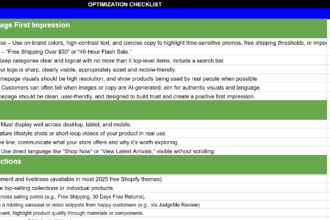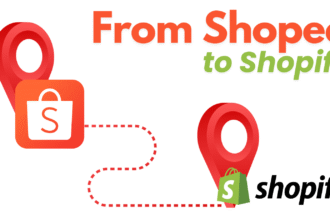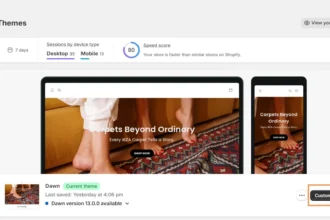Increase Average Order Value First Before Running Facebook Ads

''If you fail to plan, you are planning to fail''
Direct-to-consumer (DTC) brands, particularly those in FMCG, need to carefully strategize every aspect of their operations to stand out in a saturated market. Among these strategies, optimizing the Average Order Value (AOV) emerges as a critical factor for ensuring profitability.
Facebook, with its vast audience and sophisticated targeting capabilities, stands out as a prime advertising platform. However, the effectiveness of Facebook ads is not just about reaching a wide audience; it’s about reaching the right audience efficiently and converting that reach into substantial profits.
Understanding and optimizing AOV is crucial because it directly influences the return on investment from advertising spend. A higher AOV can mean the difference between a profitable campaign and one that fails to cover costs.
In this blog, we delve deep into why AOV is vital, how it can be optimized through strategic decisions in product pricing and marketing, and how these efforts tie into the use of Facebook ads to create a profitable ecommerce business.
Understanding the Costs of Facebook Advertising
The allure of Facebook as a marketing tool for ecommerce ventures lies in its massive reach and advanced targeting options. However, these advantages also come with significant advertising costs that can quickly diminish profit margins if not managed wisely. For DTC brands using the dropshipping model, it’s essential to understand these costs and their implications on the overall business profitability.
The Price of Visibility
Advertising on Facebook is fundamentally about buying visibility for your products or services. The platform operates on a pay-per-click (CPC) model where you are charged every time someone clicks on your ads. While this model offers the potential for high engagement, it also means that costs can escalate quickly, especially in competitive niches. For instance, in highly sought-after categories, CPCs can be substantially higher, significantly impacting your overall advertising budget.
Low-Priced Items and Profitability Challenges
One of the biggest pitfalls for new ecommerce businesses is the inclination to sell lower-priced items, typically ranging from $1 to $30. At first glance, these products might seem like an easy sell due to their affordability. However, when the advertising costs are factored in, the reality becomes starkly different. Selling low-priced items can often result in a scenario where the cost of acquiring a customer exceeds the profit made from their purchase. For example, if the CPC is $0.80 and your product is sold for $10, the margins are too thin to sustain a profitable business unless a very high volume of sales is achieved.
Real Examples and Cost Implications
To illustrate, consider a scenario where an ecommerce brand sells a product priced at $20 with a CPC of $1. If the conversion rate is around 2%, meaning that out of every 100 clicks, two result in a sale, the cost of achieving these two sales is $100 (100 clicks x $1 CPC). The total revenue from the sales would be $40 ($20 x 2), leading to a net loss of $60 per 100 clicks. This example clearly shows that without a strategic approach to pricing and advertising, maintaining profitability can be quite challenging.
In the next sections, we will explore effective strategies to increase the AOV, such as introducing more expensive products and implementing upselling and cross-selling techniques. These strategies are designed not only to enhance profitability but also to make the most of the advertising spend by increasing the revenue generated per customer.
Strategies to Increase Average Order Value
To counterbalance the high costs of Facebook advertising, increasing the Average Order Value (AOV) is essential. By focusing on strategies that encourage customers to spend more per transaction, DTC brands can enhance their profitability significantly. Here are some effective tactics to raise AOV:
Introducing Higher-Priced Products
One straightforward method to increase AOV is by adding more expensive products to your inventory. This doesn’t mean abandoning cheaper items altogether but rather complementing them with higher-priced options that can attract a different segment of customers or appeal to the existing ones looking for premium choices.
- Product Bundling: Offering bundled products can be an excellent strategy. For example, if you sell skincare products, offering a complete skincare set at a slightly discounted rate compared to buying items separately can encourage larger purchases.
- Premium Versions: Always offer a premium version of your products. For instance, if you’re selling coffee machines, have a deluxe model that comes with extra features at a higher price point. Customers looking for enhanced functionality are often willing to pay more.
Upselling and Cross-Selling Techniques
Upselling and cross-selling are powerful techniques to increase AOV. They not only improve profitability but also enhance customer satisfaction by making relevant suggestions that meet users’ needs.
- Upselling: When a customer selects a product, offer an upgraded version of the item at checkout. For example, if a customer is buying a basic model of a gadget, show them an upgraded model with better features for an additional cost.
- Cross-Selling: Suggest related products that complement the customer’s original choice. For example, if a customer buys a camera, suggest purchasing a tripod or camera case. Highlight how these additional products enhance the use of the original purchase.
Creating a Perceived Value
Enhancing the perceived value of products through excellent product descriptions, high-quality images, and showcasing customer reviews can also encourage higher order values. Customers are more likely to spend more if they perceive the product as valuable.
- Detailed Descriptions and High-Quality Images: Ensure that product descriptions are detailed and informative, and use high-quality images to help visualize the product better.
- Leveraging Reviews: Display customer reviews prominently. Positive feedback from other buyers can significantly influence purchase decisions and encourage customers to opt for higher-priced items.
Implementing a Tiered Pricing Strategy
A tiered pricing strategy where customers get a better deal as they buy more can also boost AOV. This approach encourages buying in larger quantities or more expensive tiers to maximize value.
- Volume Discounts: Offer discounts on bulk purchases to encourage buying more at once. For example, “Buy 3, get 10% off; buy 5, get 20% off.”
- Tiered Pricing: Set different price levels depending on features or quantities, encouraging customers to choose a higher-priced option for better value.

Optimizing Ad Spending for Maximum Return
Effectively managing your ad spending on Facebook is crucial to ensure that every dollar spent contributes positively to your overall profitability. Here’s how DTC brands can optimize their advertising expenditure to achieve the best possible returns.
Strategic Budget Allocation
Deciding how much to spend on ads involves understanding your business’s financials and the expected return on investment. It’s essential to set a budget that aligns with your sales goals and marketing strategy.
- Cost-Per-Click (CPC) Considerations: Assess the average CPC in your industry and set realistic budget expectations. If the CPC is high, ensure your product pricing can sustain these costs without eroding profits.
- Daily Budgeting: Start with a manageable daily budget and adjust based on performance. For instance, if a $50 daily budget consistently yields profitable results, consider scaling up gradually but safely, at 10-20% per increase.
Maximizing Ad Spend Efficiency
To get the most out of your Facebook advertising spend, focus on optimizing campaigns for higher conversion rates and better targeting.
- A/B Testing: Regularly test different ad elements like headlines, images, and call-to-actions to see which combinations perform best.
- Target Audience Refinement: Use Facebook’s targeting features to narrow down your audience to those most likely to buy. This includes demographic targeting, interest targeting, and behavioral targeting.
Leveraging Analytics
Use analytics to track the performance of your ads and make informed decisions about adjustments and future campaigns.
- Conversion Tracking: Implement tools to track what happens after a customer clicks on your ads. Knowing whether they purchased, added an item to the cart, or left the site is crucial for understanding ad effectiveness.
- ROI Analysis: Regularly review the return on investment from your ads to determine if the spending is justified. If an ad is not performing as expected, it may be time to revise or pause it.
Comprehensive Sales and Profit Calculations
Understanding how sales translate into profits, considering the costs per click, number of visitors, and conversion rate, is vital for any ecommerce venture using Facebook ads. Here’s a closer look at how to make these calculations.
Break-Even Analysis
Calculate your break-even point to understand how much you need to earn from each ad to cover the cost of that ad.
- Example Calculation: If your CPC is $0.80, and you spend $50 a day, you need enough sales to cover these costs. With an AOV of $60, achieving a profit of $30 per item, you only need two sales to break even. This is a more feasible scenario than needing multiple smaller sales to cover the same costs.
Conversion Rate Realities
Understanding realistic conversion rates is crucial for setting practical targets for your advertising efforts.
- Industry Benchmarks: Knowing that the typical conversion rate ranges from 3.3% to 6% helps set achievable goals. If your conversion rate is below this range, it might indicate a need for better targeting or ad optimization.
Exploiting Market Diversification
Diversifying the markets where you advertise can significantly reduce costs and enhance profit margins. Targeting countries with lower CPCs such as Australia, the UK, Canada, and various European nations can be a strategic move.
Benefits of Lower CPC Markets
- Reduced Ad Costs: In countries with lower CPCs, your advertising budget can yield more clicks and potentially more conversions for the same amount of money.
- Cultural Tailoring: Adjust your ads to meet the cultural preferences and purchasing habits of each target market, which can increase relevance and effectiveness.
Understanding the Sales Cycle and Real-Time Data Adjustment
Sales can fluctuate dramatically throughout the day, influenced by factors like customer online behavior and time zones.
Daily Sales Analysis
- Time-of-Day Targeting: Adjust your ad schedules based on when your target audience is most active online. For example, if conversions peak in the evenings, allocate more of your budget to these hours.
Adapting Strategies Based on Data
- Real-Time Adjustments: Use real-time data to adapt your strategies. For instance, if certain ads perform better on weekends, increase your ad spend during these days.

Conclusion
As we’ve explored throughout this comprehensive guide, optimizing the Average Order Value (AOV) is crucial for maximizing profitability in the competitive world of ecommerce, particularly for DTC brands in FMCGs.
By strategically managing Facebook ad spending, understanding the intricacies of sales conversions, and employing robust techniques like upselling, cross-selling, and market diversification, businesses can significantly enhance their financial outcomes.
The journey to ecommerce success is paved with data-driven decisions and strategic marketing maneuvers. To see how we approach social media advertising, click here.
Remember, the goal is to make each customer interaction more profitable by encouraging higher spending per transaction, which in turn offsets the costs associated with acquiring those customers.
Stay agile, keep learning, and continuously strive to optimize your business practices. The future of ecommerce is bright for those who are prepared to innovate and adapt. If you want a free audit on your ecommerce business, contact us at Soodo.
Soodo
Soodo | Shopify Website Development




